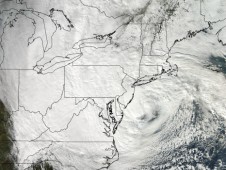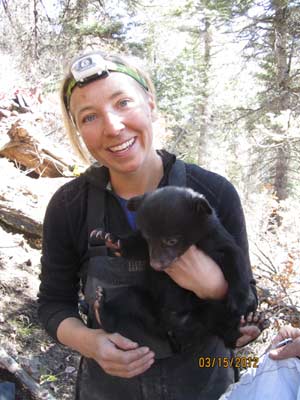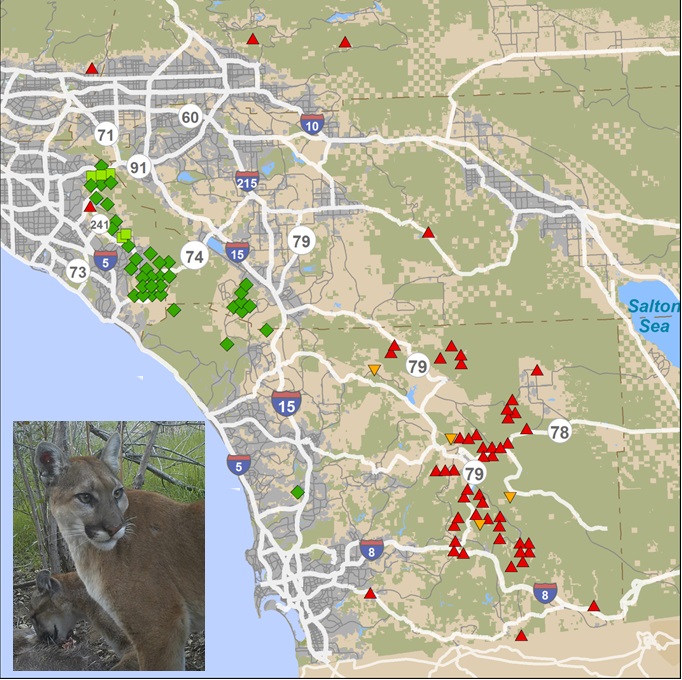 The mountain lions of southern California are hemmed in on all sides. In one place a 10-lane highway divides mountain lion habitat. All that development is particularly difficult on a species with such a large home range.
The mountain lions of southern California are hemmed in on all sides. In one place a 10-lane highway divides mountain lion habitat. All that development is particularly difficult on a species with such a large home range.
All those highways and housing developments are putting a crimp in the mountain lions of the region’s gene pool, says a recent paper in PLoS ONE by University of California, Davis scientists. The mountain lions of the Santa Ana Mountains are no longer on speaking terms with the mountain lions of the Santa Monica Mountains. Within those population segments, genetic diversity is low.
I just covered this issue back in January (where the solution was a wildlife crossing) and wasn’t sure it was worth writing about again, but a the UC Davis press release and a Los Angeles Times article pointed out that we’ve seen this phenomenon of mountain lions hemmed in by a growing human population before — in the Florida panther. Other Puma populations may not be as distinctive as the Florida panther, but we are almost certainly sure to see this again. If there is a solution, it is a story worth following.
Read the PLoS ONE paper here.
Read the UC Davis press release here.
Read the Los Angeles Times story here.
Photo/map: This map identifies puma captures in the Santa Ana Mountains and eastern Peninsular ranges of southern California. The inset photo is of a mountain lion keeping watch while her juvenile cubs feed. Courtesy: UC Davis/The Nature Conservancy

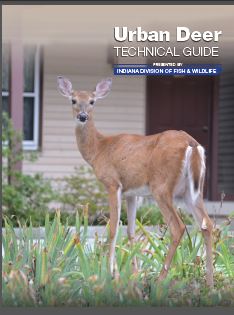 The Indiana Department of Natural Resources Division of Fish & Wildlife has put together a 32-page online booklet to help municipalities better understand deer and available management options. The impact of white-tailed deer within urban communities is not just a problem in several Indiana communities, but is a growing problem nationwide.
The Indiana Department of Natural Resources Division of Fish & Wildlife has put together a 32-page online booklet to help municipalities better understand deer and available management options. The impact of white-tailed deer within urban communities is not just a problem in several Indiana communities, but is a growing problem nationwide.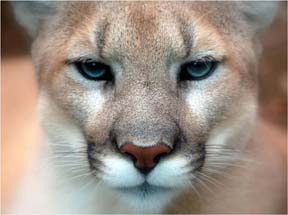 There is a small population of mountain lions in the Santa Monica Mountains, just northeast of Los Angeles. The problem is,
There is a small population of mountain lions in the Santa Monica Mountains, just northeast of Los Angeles. The problem is, 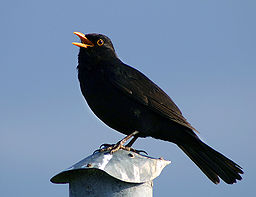 The bright lights (and noise) of the big city haven’t just made the days of songbirds longer, they have thrown a wrench in the birds’ circadian rhythms, researchers studying European blackbirds have found. The study, which is in the current issue of the
The bright lights (and noise) of the big city haven’t just made the days of songbirds longer, they have thrown a wrench in the birds’ circadian rhythms, researchers studying European blackbirds have found. The study, which is in the current issue of the From
From 